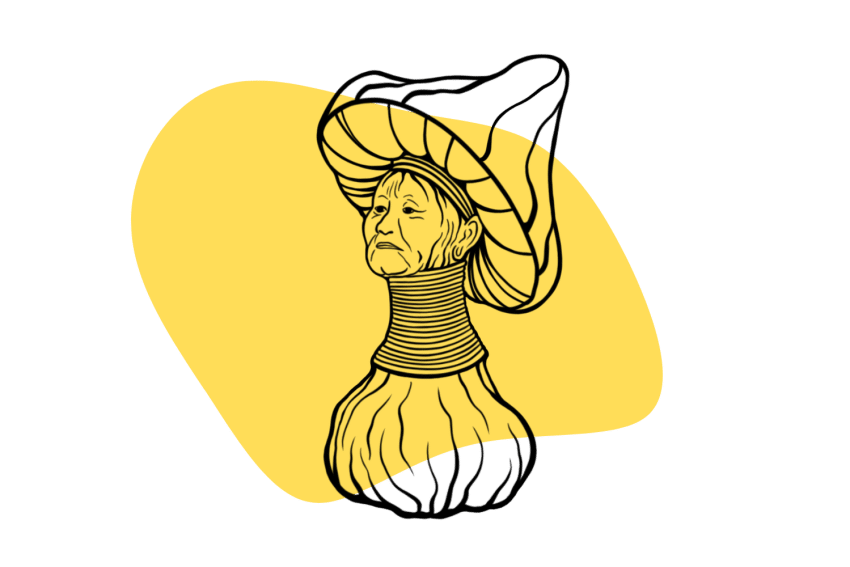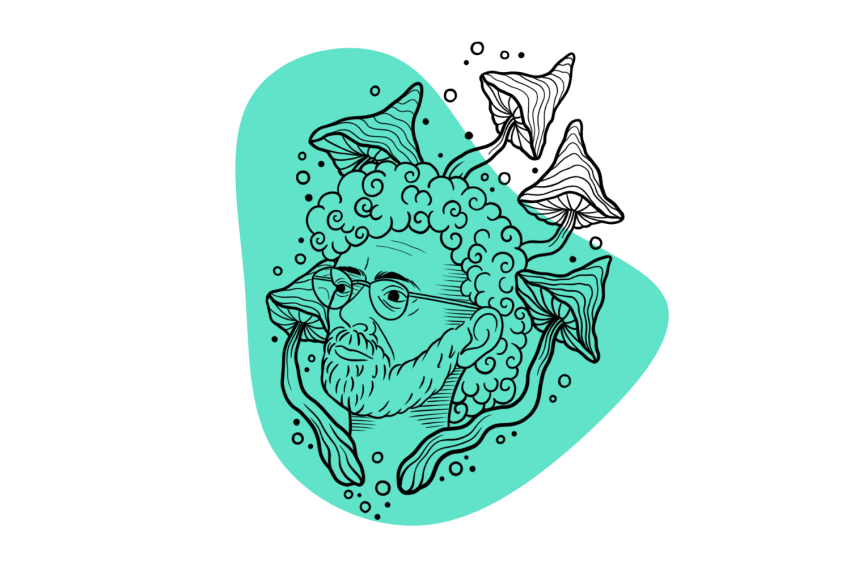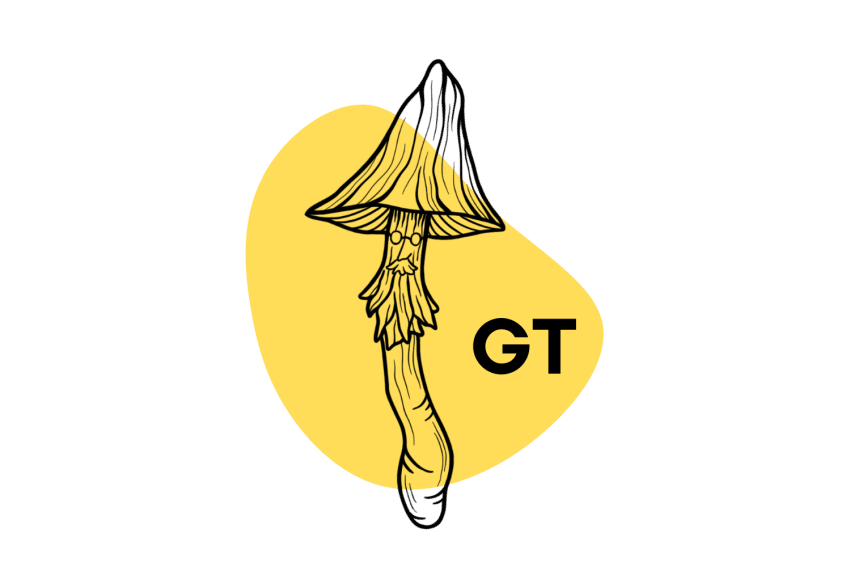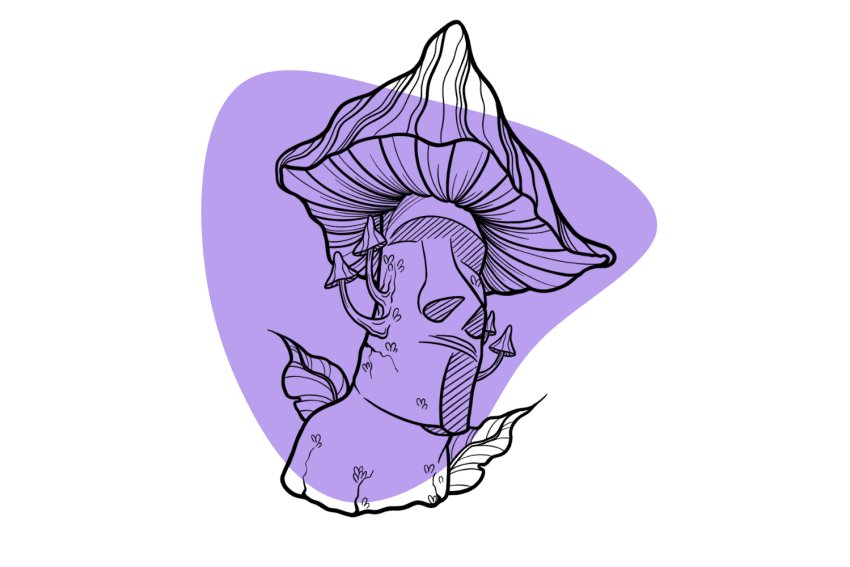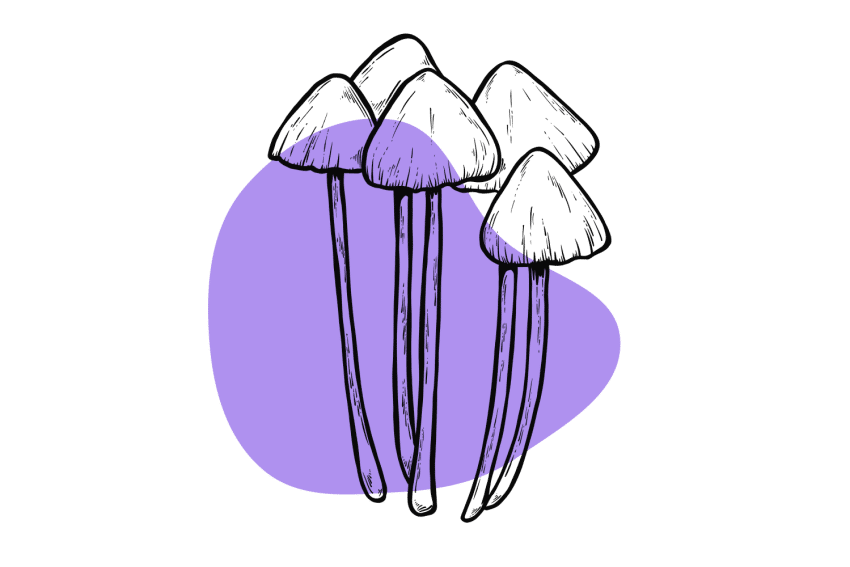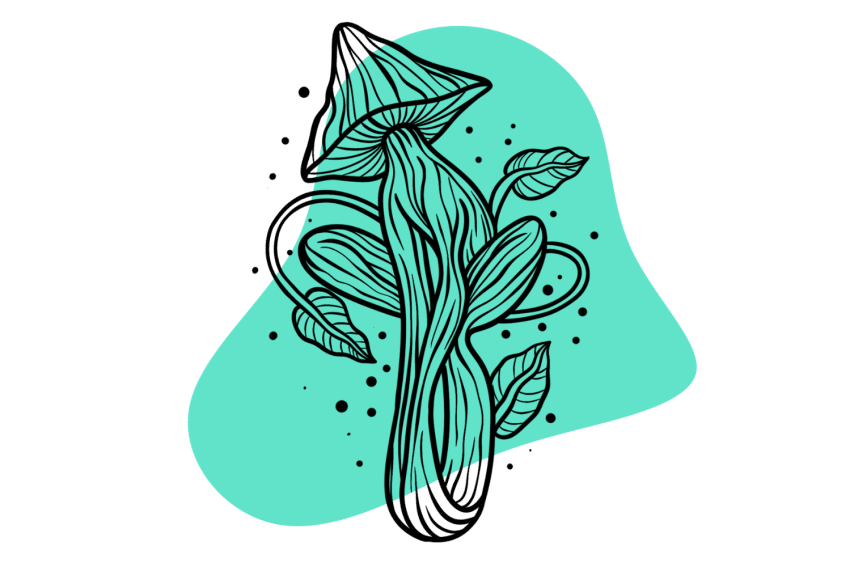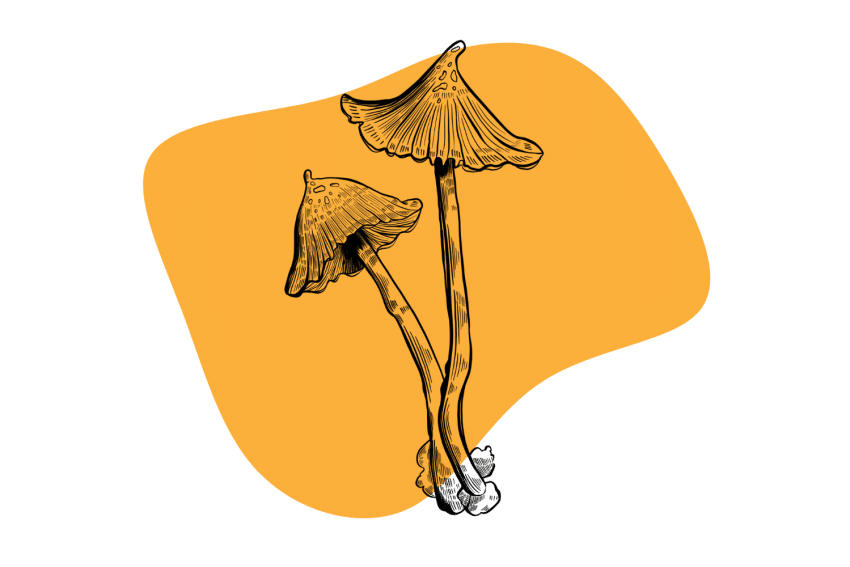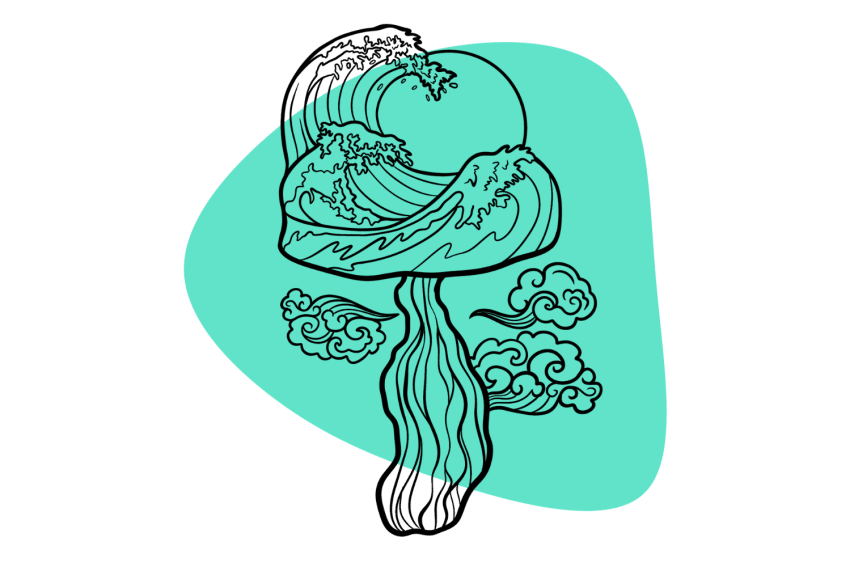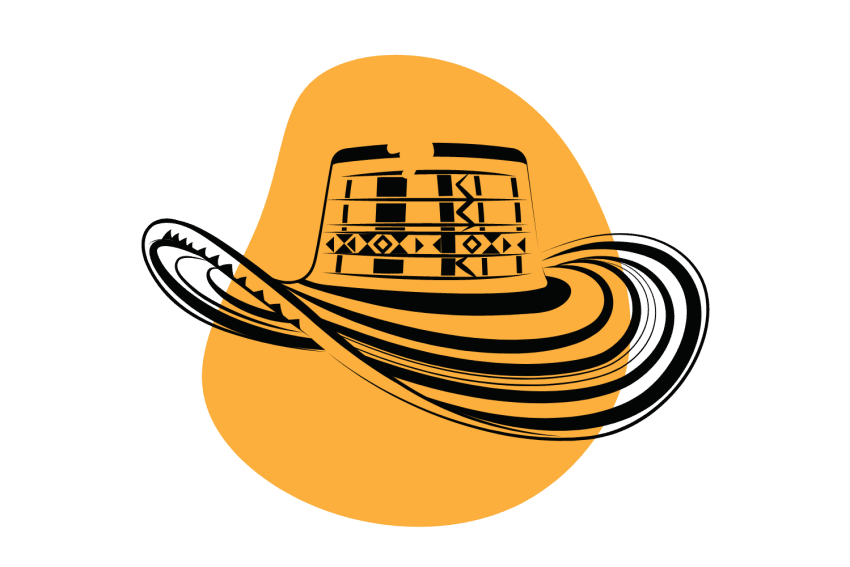Z-Strain Magic Mushrooms: Potency, Effects, & Growing Tips
Z-strain is a powerfully psychedelic mushroom known for its unique affinity for developing rhizomorphic mycelium.
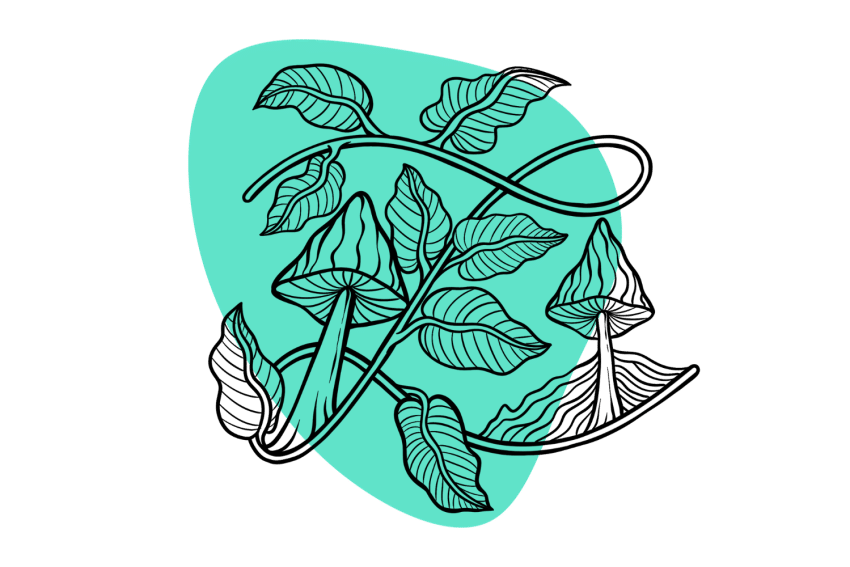
Z-Strain, sometimes called “Z-Cube,” is an average potency magic mushroom strain with uniquely aggressive growth characteristics. It’s an excellent strain for the hobby cultivator.
This strain has been found to have roughly average potency on several occasions, but online trip reports would have you think otherwise. It’s often renowned for having especially strong physical effects. Some users report intense tactile sensations — often described as a “gentle buzzing” of the skin.
What makes this strain so special is its affinity for producing rhizomorphic mycelial growth. This refers to a particular growth pattern involving thick “threads” of mycelium that spread quickly through the mycelium. This is in opposition to the tomentose growth pattern, which is much more fluffy in appearance and slow-growing.
In general, the string-like rhizomorphic mycelium is viewed as more resistant to disease, faster growing, and produces dense flushes of potent mushrooms later on during the fruiting stage.
All strains can produce both rhizomorphic and tomentose mycelium, but the Z-strain appears to be a genetic isolation of a strain that (almost) always produces the superior rhizomorphic form.
Z-Strain Specs
| Potency | Average 🍄 |
| Cultivation Difficulty | Easy |
| Species | Psilocybe cubensis |
| Spore Vendors | Ralphsters, Mushroom Prints |
History of Z-Strain Mushrooms
Z-Strain belongs to the Psilocybe cubensis family of psychedelic mushrooms. The history of this mushroom is unclear (and somewhat controversial) — but this isn’t unique to this strain. Many mushroom strains are born from underground cultivation by unknown hobbyists and expert mycologists. Because magic mushrooms are illegal, few people have stepped forward to take public credit for their creations.
The Z-strain is no exception, but there are a few theories floating around about its possible origins.
Some reports suggest this strain was created by the legendary mycologist Paul Stamets, but he’s never publicly accepted credit for this unique mushroom.
There’s another story about a mysterious mycologist named “The Keeper,” who claims to be responsible for cultivating this strain.
The controversy is that The Keeper would take established mushroom strains, rename them, and sell them online as their invented strain through ads in High Times magazine and online.
According to a Reddit thread, The Keeper was caught when they used photos of established strains and forgot to change the names of the files when uploading them online under their new strain name.
Others believe this strain came straight out of stock and developed by the legendary mycologist Paul Stamets.
Regardless, the consensus on the origin of the Z-Strain mushroom is that it’s an isolation of the famous Golden Teacher strain, which hails from Mexico, but this hasn’t been confirmed.
Z-Strain Potency & Psilocybin Content
Oakland Hyphae hosts a yearly Psychedelic Conference and The Psilocybin Cup, in which cultivators from around the world submit their mushroom strains to compete for the most potent shroom.
In the Spring Oakland Cup 2021, a Z-Strain sample submitted by No Cap was graded “A.” The sample strain had a psilocybin content (PCB) of 0.66% and a psilocin content (PCN) of 0.17%. The total tryptamine level was listed as 0.83%.
While these figures certainly aren’t the highest on this list, we only have one sample to go off. It’s likely that under the right conditions, the Z-strain is capable of much higher potency levels.
We consider the average range for Psilocybe cubensis mushrooms to fall somewhere between 0.5% and 0.9% total tryptamines (dried weight).
Other samples have been found to contain as much as 2% psilocybin and 1.2% psilocin — which would place it in the very potent category. Unfortunately, the official lab reports for these findings have not been made public so we’re unable to confirm these figures.
Comparing Z-Strain to a popular shroom stain and Z-strain’s presumed relative, Golden Teacher, we can see that they’re relatively similar. However, Golden Teachers have a slightly lower psilocybin and psilocin content of 0.73% (based on 11 separate Psilocybin Cup entries across 2 years).
These strain entries were submitted by experienced growers, who we can presume provided the best growing conditions for their mushrooms.
Z-Strain Variations & Genetic Relatives
The closest relative to Z-Strain is the Golden Teacher mushrooms, perhaps the market’s most dominant variety of shrooms.
Z-strains and Golden Teachers share distinctive yellow-gold caps, which is just one of the many reasons many people believe that Z-Strain is an isolation of this shroom.
Golden Teachers are known as dependable shrooms for their gentle entheogenic effects and easy cultivation.
You can find Golden Teachers and other variants of this strain at virtually any major spore vendor online, and it’s a reasonably beginner-friendly spore to start with.
Other relatives of the Golden Teacher strain include:
Where to Buy Z-Strain Spores
Z-Strain shrooms have been on the market for several decades and are easy to source through most major shroom spore vendors.
If you live in the United States, you can check out places like Mushroom Prints or RalphstersSpores.
In Canada, vendors like Nupepshrooms or Spores 101 are good sources.
In Europe, you can look for Amsterdam-based companies like the Magic Mushroom Shop.
How to Grow Z-Strain Shrooms
A wide variety of Psilocybe cubensis grow naturally in the wild, but Z-Strain is not one of them.
To get a shroom like Z-Strain, mycologists will selectively breed strains in a lab to pass on specific characteristics such as their potencies, life cycles, resistance to contamination, and large fruiting yields.
Z-Strain is often sold as a great beginner strain as the mycelium tends to aggressively colonize its substrate, is relatively resistant to contaminants, and yields impressive flushes of mushrooms in a short amount of time.
To grow Z-Strain shrooms, you’ll need to find spores and a grow kit, which you can DIY if you’re up for it.
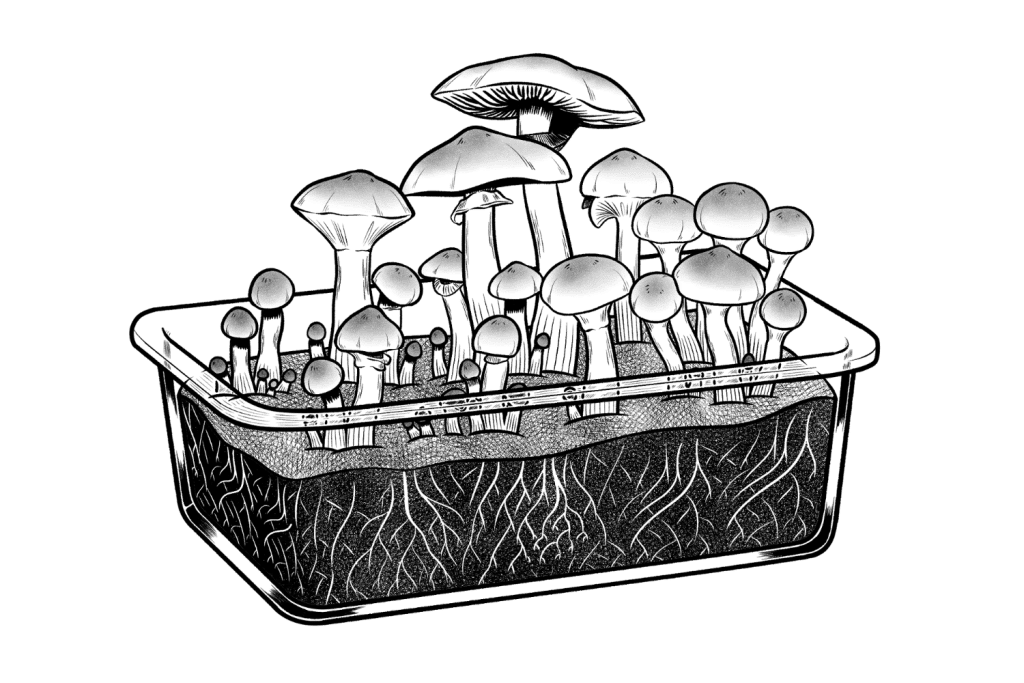
Related: How to Grow Magic Mushrooms & Home
Z-strain’s ability to form rhizomorphic mycelium without much intervention makes it one of the easier strains to cultivate. Most strains will produce rhizomorphic and tomentose mycelium, but rhizomorphic growth is considered the best for cultivators. It grows faster and offers better contamination resistance. These effects lead to more abundance and higher potency.
Many growers will germinate their spores in agar plates to isolate the rhizomorphic patterns. They then cut sections of the rhizomorphic mycelium from the agar and use that to innoculate their substrate jars.
Despite having a somewhat higher contamination resistance, growers must ensure their workstations and equipment are sterile to avoid botching the process.
The ideal temperature for Z-Strain is around 24°C (75°F), and you want to keep your fruiting chamber humid.
You can pick the fruit from the stems once the caps open and leave them dry. Don’t throw away your substrate cake just yet — you can expect multiple flushes from these shrooms by maintaining the temperature and humidity. With each flush, the yield will become sparser and sparser.
Similar Strains (Beginner-Friendly Strains)
While the Z-Strain is one of the more popular magic mushroom strains available, many other strains offer similar effects and are deemed beginner-friendly.
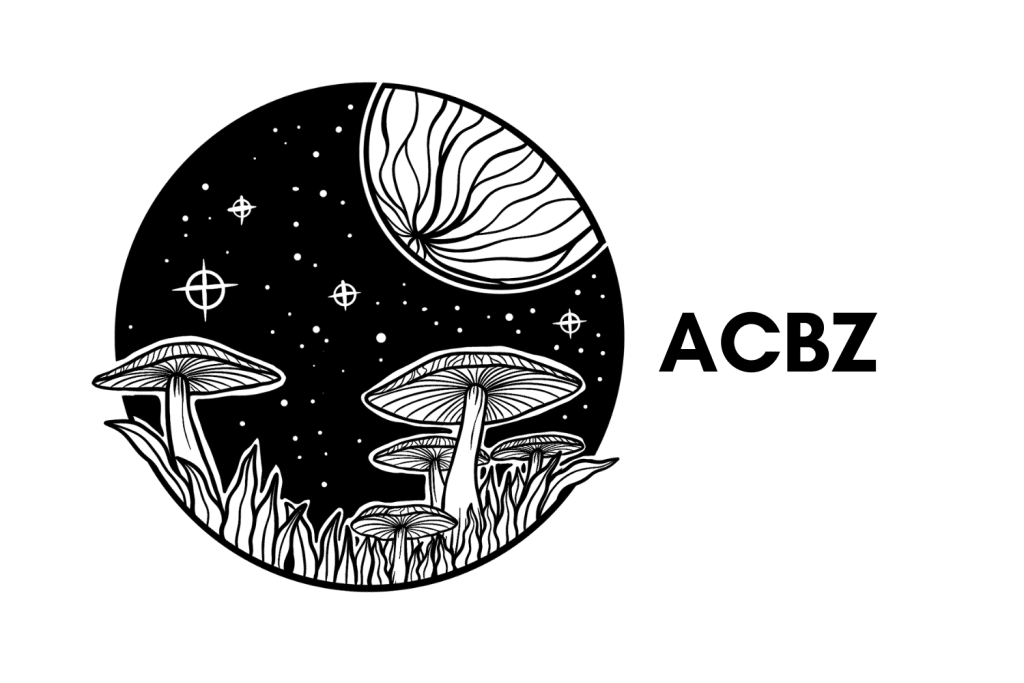
Alcabenzi
Alcabenzi shrooms are believed to be a cross between Golden Teachers (Psilocybin cubensis) and Mexican Liberty Caps (Psilocybe mexicana). However, many mycologists argue that this cross between species isn’t possible.
Alcabenzi shrooms also have an above-average potency and are easy to cultivate. However, the strength will largely depend on the substrate materials and nutrient content.
Alcabenzi delivers a good head high and creates mild visual hallucinations.
Many people enjoy Alcabenzi for meditative practices as they don’t tend to be overly intense.
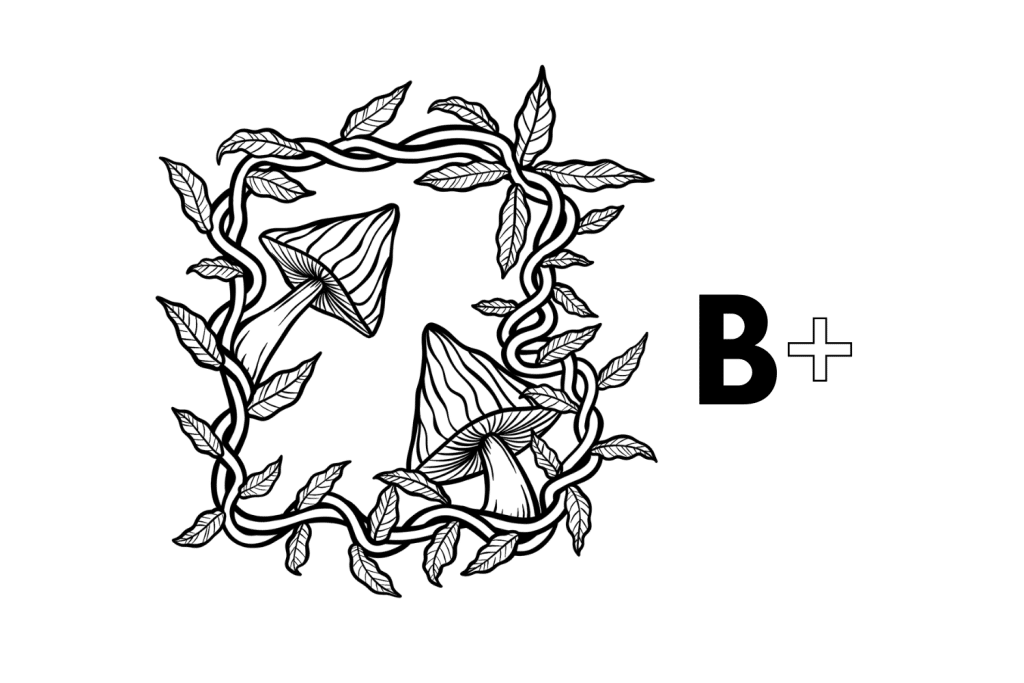
B+ Strain
The B+ strain is another classic shroom strain that is “invented” (genetically isolated).
These shrooms have characteristics typical of Psilocybe cubensis and Psilocybe azurescens. However, like the Alcabenzi origin story, this B+ strain theory is hotly debated. Mycologists theorize these two mushroom species are doubtful to produce offspring when cross-bred.
B+ shrooms are known for their large mushroom bodies and very mellow experience, similar to the Z-Strain. However, it is a slower-growing mushroom strain, so you’ll need a bit more patience. But the payoff is well worth it.
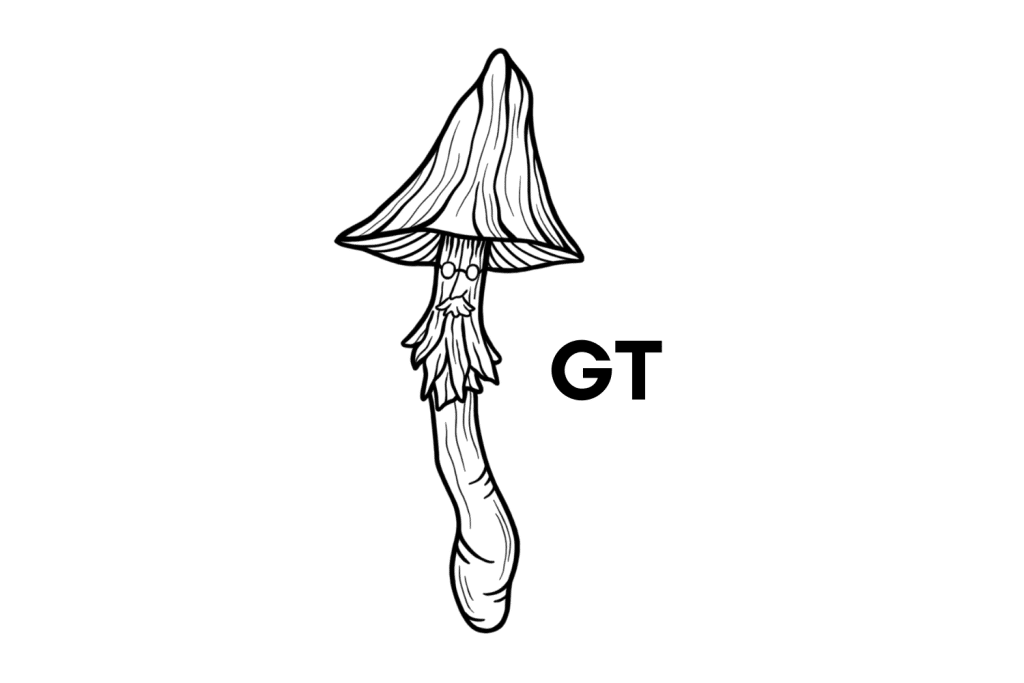
Golden Teacher
We’ve already discussed the Golden Teacher strain as the potential parent to the Z-Strain, so we’ll keep this brief.
Golden Teachers are known for their easy cultivation and satisfying flushes. Like Z-Strain, they’re considered to have above-average potency, but other strains (as seen in the Psilocybin Cup) have higher potencies.
Other Golden Teacher-Esque mushrooms include Golden Emperor, an isolation of Golden Teacher designed by Sporeslab. These produce fruit with slightly larger bodies.
Strains vs. Species: What’s The Difference?
Species refer to a larger group of organisms that share the same genetic makeup — in other words, they can interbreed and produce offspring that are also capable of reproducing. This is considered the most critical aspect of determining whether two organisms belong to the same species.
That being said, not everything can be neatly labeled into distinct categories.
Other factors can be used to define a species. For example, two groups of organisms may be considered separate species if they live in distinct geographical areas or have substantial differences in physical characteristics.
Ultimately, the definition of a species is somewhat arbitrary and can depend on the observer’s interpretation.
Strains, however, are genetic samples that produce an observable and replicable set of traits within the same species, such as growth habits and chemical makeup.
Some strains of mushrooms tend to grow taller naturally than others or have the propensity for a higher psilocybin content. For example, many strains of the Psilocybe cubensis mushrooms can produce slightly different effects, have different growth habits, and prefer other unique growing conditions.
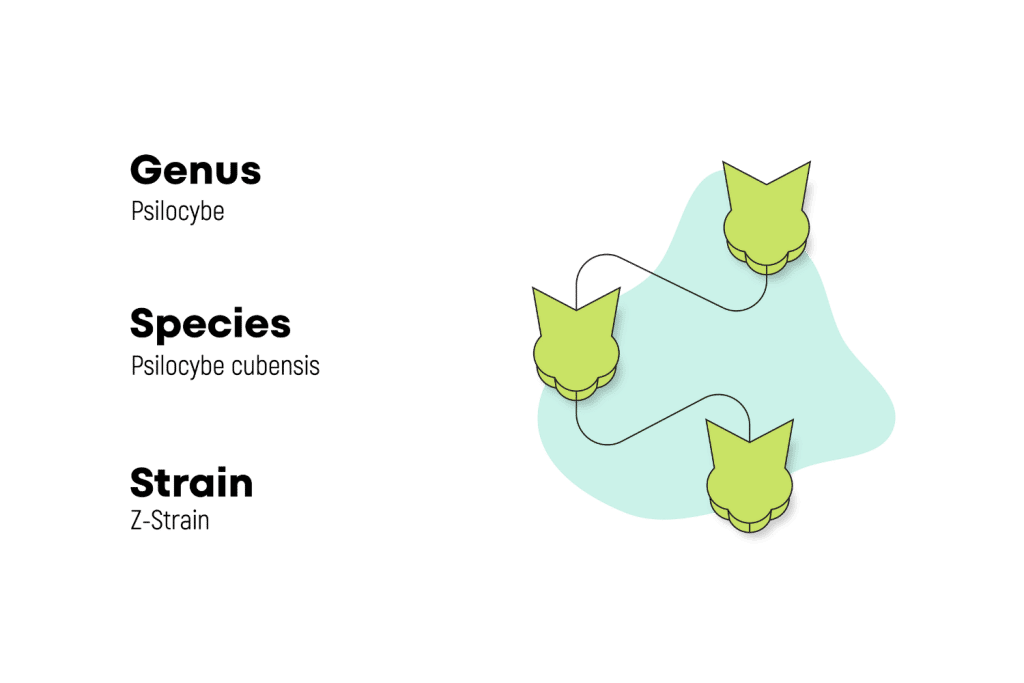
The result of varying strains is believed to be a result of epigenetic responses to the environment rather than changes in the genome, which would make it a distinct species.
If you’ve ever been to a cannabis dispensary, you’ve probably noticed the plethora of weed strains with names like “Strawberry Cough,” “OG Kush,” and “Girl Guide Cookies.”
Strains can arise naturally in the wild or be created through selective breeding.
Strains are often given these unique names to distinguish them from other members of their species and give users an idea of the experience they can expect.
Just like in the world of cannabis, hundreds of distinct Psilocybe cubensis strains are differentiated by their chemical makeup and growing habits.
While Z-Strain is known to have exceptional potency, mycologists aren’t entirely sure that the strain itself is to be thanked for these effects. It seems as though proper growing conditions are much more critical to the potency and the effects of magic mushrooms.
More expert growers and mycologists agree that a strain’s effect varies every time it’s grown by someone new, depending on the mushroom’s growing conditions.
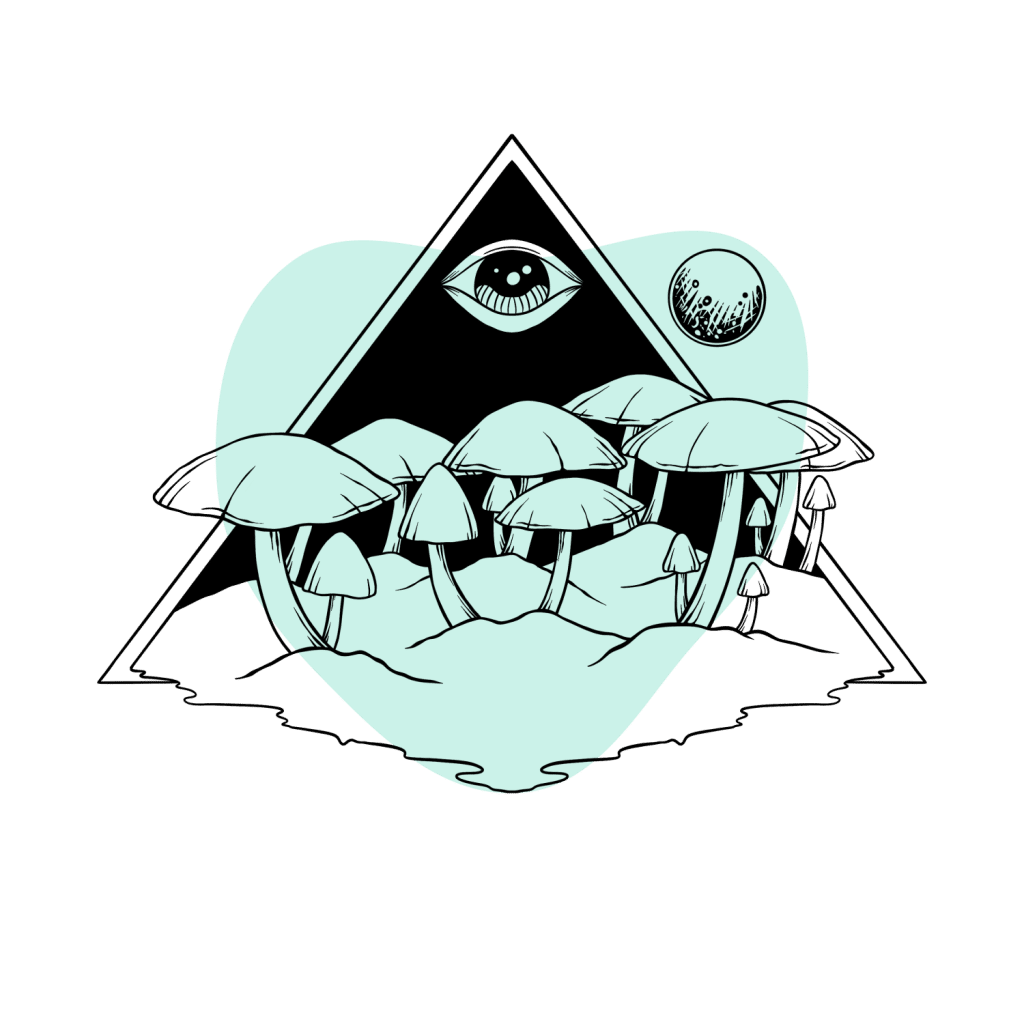
Final Thoughts: Z-Strain Shrooms
Z-Strain shrooms have a bit of a controversial origin story, first appearing on the scene in the early 2000s. Despite this, the strain remains a classic for its reported potency and impressive yield, even for beginner growers.
While a strain may indicate the potency and effects of a mushroom, the most significant determining factor is creating the ideal growing conditions to allow this strain to thrive.
The main trait this mushroom offers that makes it unique is its strong affinity for producing rhizomorphic mycelium. Many growers try to isolate rhizomorphic mycelium using agar plates because it grows faster and produces more prolific flushes than its tomentose counterpart.
Even with potencies aside, every person’s experience with magic mushrooms will be different, so it’s essential to approach them with caution and an open mind. Whether you’re interested in trying Z-Strain or another type of magic mushroom, always research, start with smaller doses, and experiment with mushrooms in a safe and comfortable environment.

